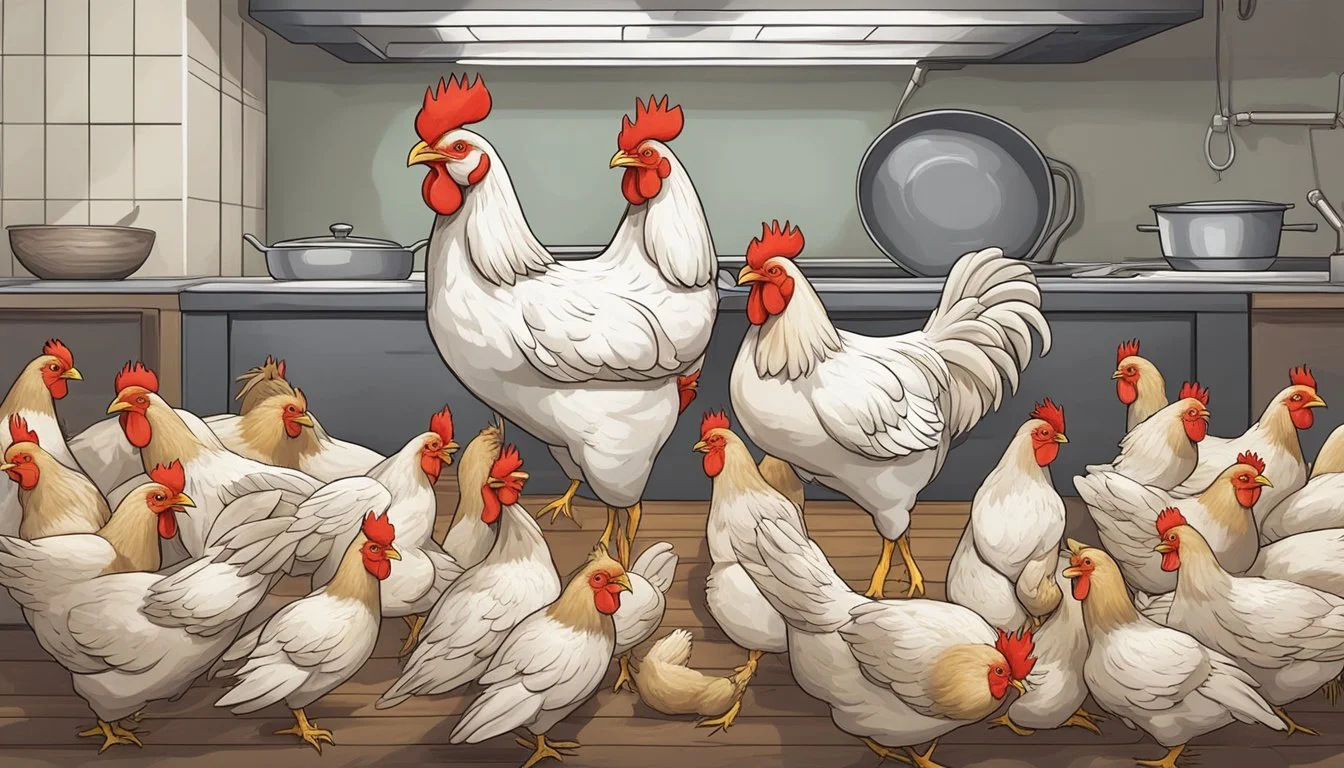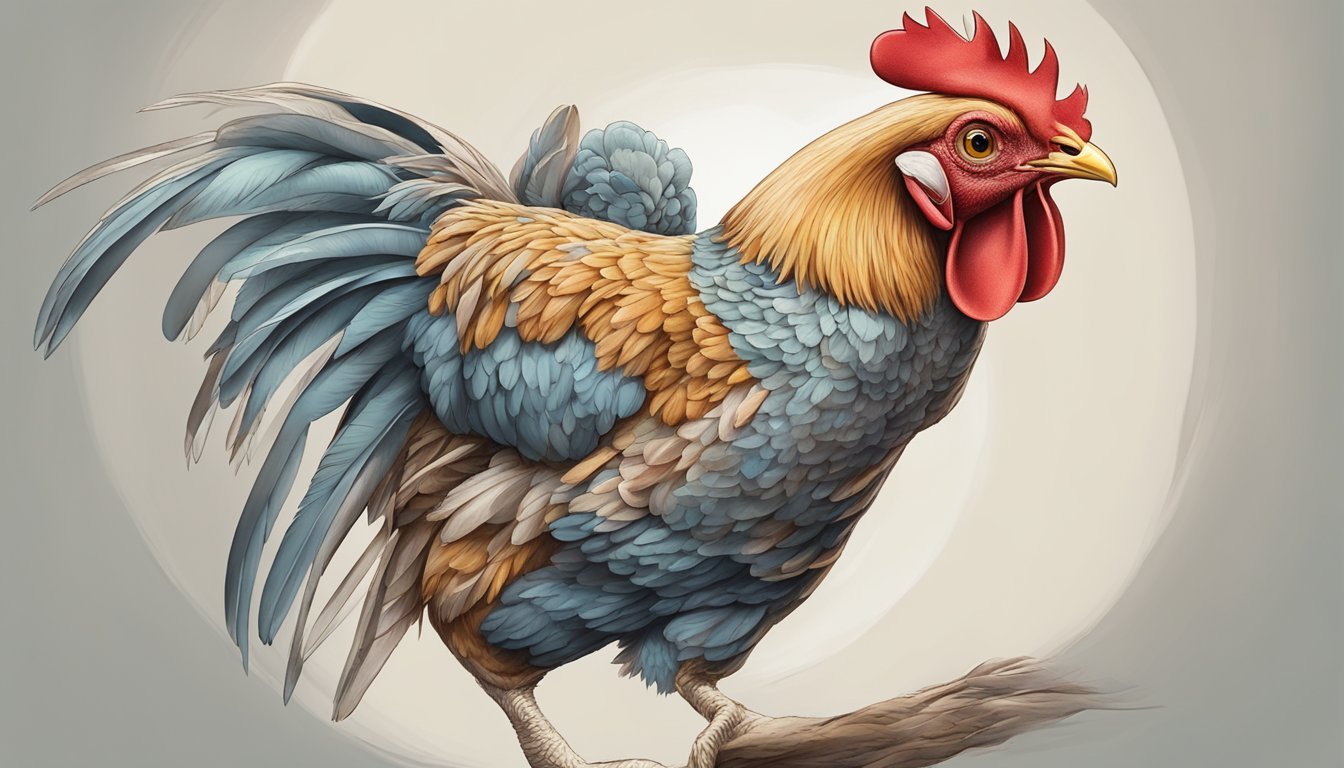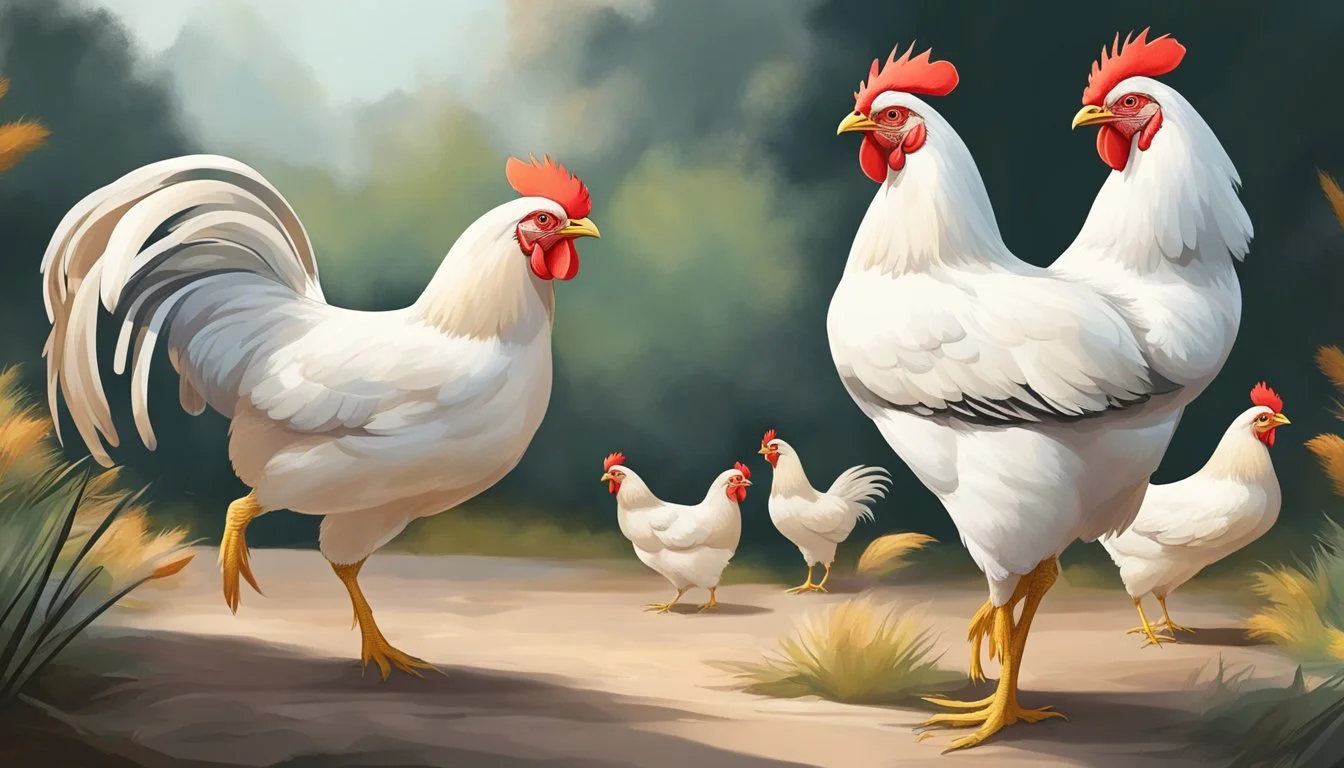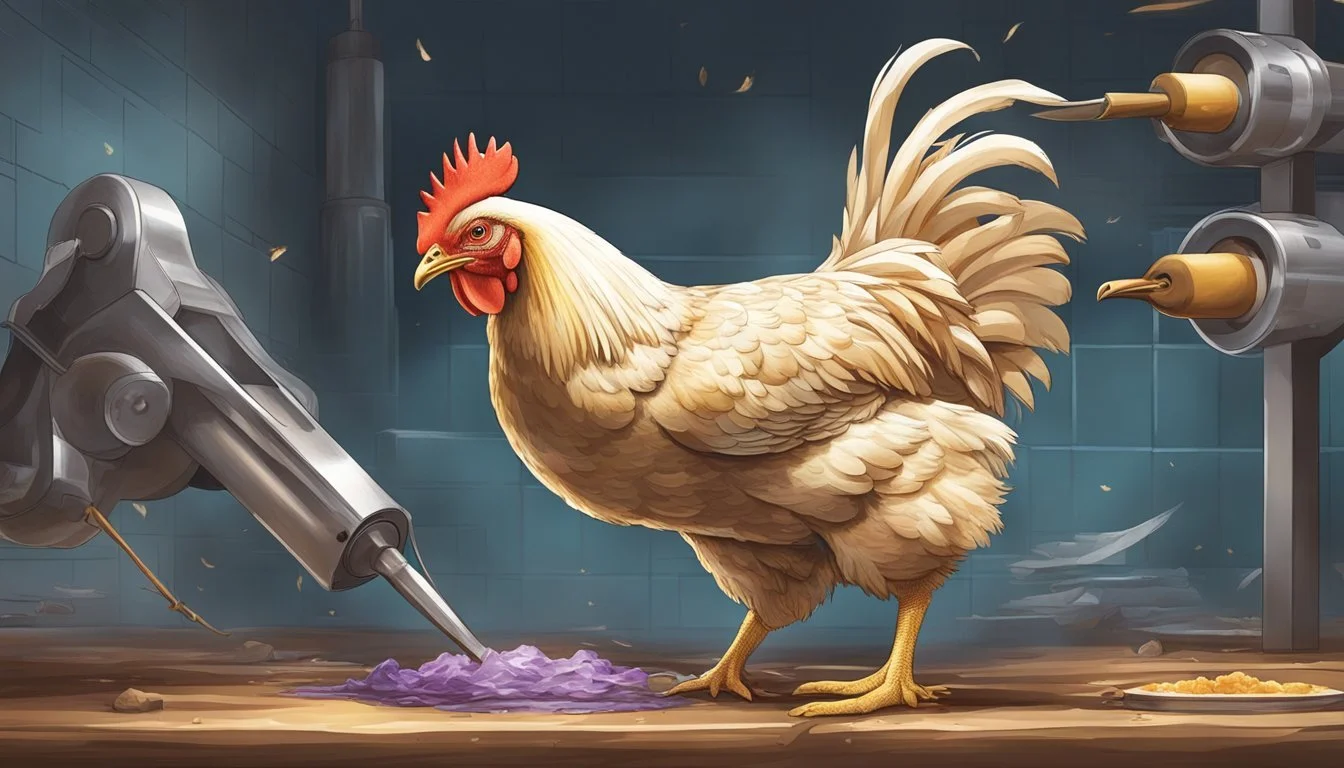What Are the Best Practices for Humane Chicken Slaughter?
Ensuring Ethical Poultry Processing
The topic of humane chicken slaughter is one that is intertwined with ethical farming practices, animal welfare standards, and consumer awareness. The process encompasses everything from the handling of chickens during their final moments to the tools and techniques used for slaughter. Humane methods are designed to minimize pain and stress, ensuring a quick and as-painless-as-possible death for the animals. These methods are not only a matter of ethics but also often a legal requirement, as seen with legislations like the Humane Methods of Slaughter Act.
Understanding the best practices starts with recognizing the importance of stunning—a process that renders the animal insensible to pain before slaughter. Such practices are enhanced by using the right equipment, like a sharp knife or a captive bolt gun, and following guidelines that respect the well-being of the chicken. A humane approach also considers the skill and training of the personnel involved to ensure that the procedures are carried out effectively and with precision.
The conversation around humane chicken slaughter is also part of a larger dialogue about sustainable farming and meat consumption. Consumers increasingly demand transparency and high standards, which in turn pushes for advances in slaughter methods. Farmers and processors that commit to humane standards are often supported through certifications and gain favor with consumers who prioritize animal welfare alongside quality of produce.
Understanding Humane Slaughter
In the context of poultry processing, humane slaughter practices are critical to ensure that chickens do not endure unnecessary suffering. These practices are not only a moral imperative but are often legally mandated to provide a death that minimizes pain and stress for the animals involved.
Definition of Humane Slaughter
Humane slaughter refers to the method of killing livestock and poultry in ways that instantaneously render the animals insensible to pain before death. The goal is to cause a rapid, humane death while maintaining animal welfare standards. It requires the chicken to be conscious right up until the moment when they are made swiftly insensible to pain, usually through mechanical or controlled-atmosphere methods.
Humane Slaughter Act and Regulations
The Humane Methods of Slaughter Act (HMSA) mandates that animals be rendered insensible to pain before slaughter. This federal law oversees the proper treatment of animals and ensures that slaughter is conducted using practices that cause rapid loss of consciousness followed by humane death. Compliance with the HMSA is enforced by authoritative bodies such as the USDA's Food Safety and Inspection Service.
Animal Welfare Considerations
When considering animal welfare in the context of slaughter, several factors are paramount: the skill of the handler, the techniques employed, and the equipment used. All personnel involved must be trained to handle chickens calmly and efficiently to minimize stress, and the slaughter itself must be carried out using methods that cause instantaneous unconsciousness, ensuring the animals do not experience pain during the process.
Preparation for Slaughter
Prior to slaughtering chickens, it is critical to have a structured environment, the necessary equipment in optimal condition, and a method for calm chicken handling. These steps ensure efficiency and adherence to humane standards.
Setting Up the Slaughter Environment
Creating a calm and controlled environment is essential for the humane slaughter of chickens. The area should be clean, well-lit, but not overly bright, as this can distress the animals. It's crucial to minimize noise and avoid sudden movements to keep the chickens at ease. An organized environment with everything in its place contributes to a smoother process and reduces stress for both the chickens and the handlers.
Selecting and Maintaining Equipment
Proper equipment selection and maintenance are vital in humane slaughter practices. Sharp knives or blades are necessary for quick, precise cuts, reducing the bird's suffering. Ensure regular inspection and maintenance of restraining cones, killing cones, or stunners to guarantee their functionality. Each piece of equipment should be sanitized before use to prevent disease transmission.
Handling Chickens Prior to Slaughter
Chickens should be handled gently to avoid stress and potential injury before slaughter. Handlers should firmly yet softly restrain the birds, maintaining a secure grip to prevent escape without exerting excessive pressure. The aim is to move the chickens from their holding area to the slaughter site in a way that maintains their calm state, thereby making the slaughtering process as quick and humane as possible.
Slaughter Methods
Best practices for humane chicken slaughter focus on minimizing the birds' stress and pain. A variety of methods are employed, each with specific protocols to ensure a quick and humane death for the chicken.
Mechanical Stunning
Mechanical stunning is a common method used to render chickens unconscious prior to slaughter. The most prevalent form is the use of a captive bolt device that delivers a forceful strike to the head, causing immediate unconsciousness. This method often precedes the actual process of slaughtering the chicken, thereby reducing any sensation of pain during the procedure.
Electrical Stunning
Electrical stunning works by sending an electric current through the chicken's body or head, leading to unconsciousness. It is vital that the electrical parameters are carefully controlled; the current must be sufficient to stun the chicken instantly without causing death or unnecessary suffering.
Controlled Atmosphere Stunning
Controlled atmosphere stunning (CAS) involves exposing chickens to a gas mixture or low oxygen environment, leading to loss of consciousness. CAS has variations, including the use of carbon dioxide, argon, or nitrogen, which can be adjusted to ensure unconsciousness prior to the slaughter process.
Cervical Dislocation and Decapitation
Cervical dislocation, which is manually dislocating the neck of the chicken, is a method sometimes used for small-scale operations or on-farm slaughter. As for decapitation, it entails severing the chicken's head from the body. Both techniques require skill to execute properly to ensure they result in a swift and humane death. These methods are typically performed when other stunning methods are not available or practical.
Performing the Slaughter
Performing the slaughter of a chicken requires attention to detail and adherence to humane methods to ensure the process inflicts minimal distress on the animal.
Effective Use of the Killing Cone
The use of a killing cone is critical to restrain the chicken and prevent unnecessary flapping which could cause distress. The chicken is placed upside down in the cone, allowing gravity to calm it before slaughter. The design of the cone restricts movement while providing the necessary access to the neck.
Proper Technique for Neck Cutting
A sharp knife is essential to sever the carotid arteries effectively. An incision should be made swiftly and confidently, being careful to cut deep enough to reach both carotid arteries without damaging the spine. This technique ensures a quick drop in blood pressure and rapid loss of consciousness and sensation, leading to a more painless death.
Ensuring a Swift and Painless Death
Achieving a swift and painless death requires a combination of sharp tools and precise technique. It is imperative that one makes a single, decisive slice to the throat, avoiding a chop which can cause unnecessary pain. Properly maintained sharp knives and a focused mind can help to deliver a clean cut, minimizing the time it takes for the chicken to become insensible.
Post-Slaughter Processes
After the slaughter, attention to detail is crucial to ensure the quality and safety of poultry products. Effective post-slaughter processes are integral to maintaining the humane treatment of chickens.
Bleeding and Ensuring Death
Once chickens are rendered insensible to pain and unconscious, they are hung upside down on a conveyor to initiate bleeding out, a critical step in ensuring death. Proper bleeding involves severing the main artery in the neck, which allows for a fast and significant loss of consciousness. It is crucial that chickens are fully bleeding and confirmed to be no longer conscious before proceeding to the next stages.
Scalding and Feather Removal
Following bleeding, the chickens are placed into hot water tanks to scald the carcass and loosen feathers. The temperature of the water is closely monitored with a thermometer to ensure it is hot enough to facilitate feather release without cooking the skin. Subsequently, the chickens are transferred to a plucker, a machine that removes the feathers via rubber fingers that rub off the feathers gently yet efficiently.
Evisceration and Cleaning
The final steps involve evisceration, where all internal organs are removed carefully to avoid any contamination. The carcass is then cleaned thoroughly to ensure that any residual organ material and bacteria are removed. Cleaning involves washing the chicken both inside and out with water and ensuring that the carcass is free of any contaminants before being processed further or chilled for packaging.
Additional Considerations
When it comes to humane chicken slaughter, beyond the immediate act of killing, there are several important areas to consider. These aspects play a crucial role in ensuring animal welfare standards are met and are critical to the quality of meat produced.
Transportation and Unloading
Transportation should minimize stress and injury. Chickens must be carefully loaded into crates that provide adequate ventilation and protection from harsh weather conditions. Upon arrival at the processing facility, unloading should be done calmly to prevent panic and harm. Guidelines from the Humane Slaughter Association detail the best practices for transporting and handling chickens to avoid undue stress.
Meat Quality and Processing
The manner in which chickens are slaughtered has a direct impact on meat quality. Stress and improper handling before and during slaughter can lead to poor meat quality, affecting texture and shelf life. Following humane slaughtering techniques not only is ethical but also ensures that the meat is of the highest quality for consumers. Articles like Chicken Processing 101: When to Slaughter Chickens, Steps & Equipment provide insights into steps that affect meat quality during processing.
Legal and Inspector Requirements
Adherence to legal requirements is crucial for humane chicken slaughter. In the United States, the Humane Methods of Slaughter Act oversees the slaughter of livestock, including chickens. It necessitates rendering chickens insensible to pain before slaughter. Furthermore, an inspector often oversees the process to ensure compliance with these laws. Understanding and following the guidelines found in documents such as the AVMA Guidelines for the Humane Slaughter of Animals is essential for any facility that slaughters chickens.





